Syracuse, Theater
Q1058967Syracuse: the ancient capital of Sicily.
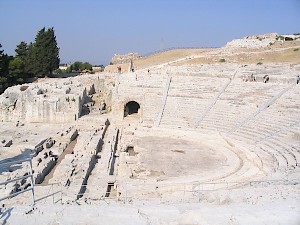
The theater of Syracuse, which is about 138 meters wide and one of the largests theaters in the Greek world, dates back to the reign of Hiero I, who was tyrant of Syracuse from 478 to 467. The architect's name was Democopus. In this theater, Aeschylus' Persians were staged for the first time.
The theater was expanded by Timoleon and king Hiero II, who increased the number of rows to 67. Several inscriptions refer to members of the royal dynasty that was in charge of Syracuse in the third century BCE, and appear to be the names of the wedges into which the theater was divided. They can still be read: βασιλεος ῾Ιηρωνος (of king Hiero), Διος Ολυμπιου (of the Olympian Zeus), βασιλισσας Φιλιστιδος (of queen Philistides), βασιλισσας Νηρηιδος (of queen Nereis).
All in all, the theater had a capacity of about 20,000 people. (About twenty-one rows were removed when a sixteenth-century Spanish governor of Sicily needed stones to build new defenses.) In the Roman age, the theater was probably used for gladiatorial contests. For this purpse, the stage and orchestra were changed.
At the top of the theater were two porticoes and an artificial grotto with an arched ceiling and eight niches. There is some water flowing through it. This was the Nymphaeum, which was used for religious festivals.
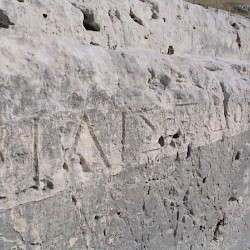 Syracuse, Theater, Inscription of Philistis |
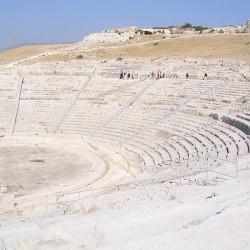 Syracuse, Theater, Seats |
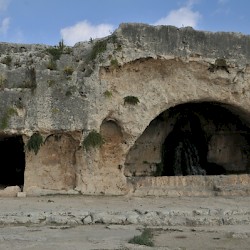 Syracuse, Theater, Nymphaeum |
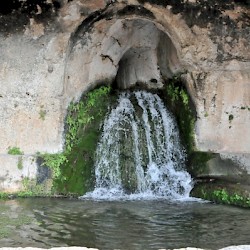 Syracuse, Theater, Nymphaeum |